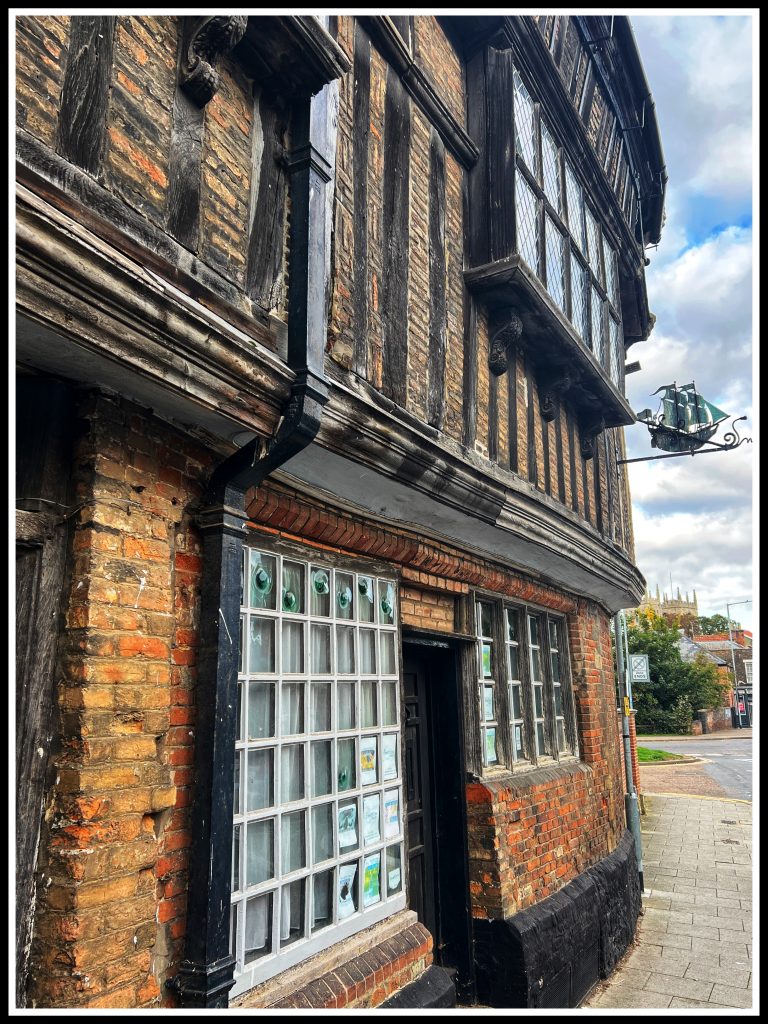Most people walking along the quayside in King’s Lynn would be astonished to learn that the town once had a whaling industry. The port, which now has a very small fishing fleet, was at one time a thriving centre of commerce. King’s Lynn did have a whaling industry from between 1774 – 1821.

Photo © James Rye 2022
Whaling: Government Inducements
In the C18th the government increased the bounty on whale oil from 20s (1733) a tonne to 40s (1771). A single, 30 tonne whale would be worth a lot of money.
As a further inducement to the whaling industry as a whole, an Act of Parliament in 1771 exempted whalers from paying duty on the catches, and gave their crews immunity from the demands of the press-gang during the whaling season.
In 1753 there were only a total of 35 English ships that sailed to catch whales, with none from King’s Lynn. However, by 1788 there were 247 ships. And 5 of those were from King’s Lynn. Lynn’s industry was important but relatively small. In 1788 Hull sent 36 ships and Whitby 20.
Made From Whales
- Blubber to produce oil and grease for lighting and lubrication. Oil was used in soap manufacture and also used to wash wool.
- Bone to substitute for ivory – brush handles, whip handles, walking stick handles, cutlery, chairs, butchers blocks, decorative items.
- Bones to stiffen ship hulls.
- Bone meal fertiliser.
- Baleen – corsets, combs, carriage springs.
- Remaining carcass was used for fertilizer.
Whaling: The Season
The ships sailed out in early April and came back in late August. The ships to went Greenland and the Davis Strait. At the first sign of return the bells of St Margaret’s were rung and people ran to the quayside to see the catch (typically 3 or 4 ships bringing around 12-20 whales, and a number of seals).

Photo © James Rye 2022
It is thought that the last whaling ship sailed from King’s Lynn in 1821. By the mid 19th century there was no longer such a high demand for whale oil. Paraffin and coal gas were already lighting streets and houses and in 1859 oil was discovered in Pennsylvania.
Whaling: The Ships
Whaling ships were often converted merchant ships. They measured around 100 feet long and 26 feet wide and were capable of carrying a cargo of 250-400 tons. They were reinforced to be able to break through the ice and to be able to resist ice-crushing.
The ships, which at some time were involved in Lynn’s whaling industry, were: the ‘Jango’, ‘Enterprise’, ‘Experiment’, ‘Balaena’, ‘Eclipse’, ‘Fountain’, ‘Bedford’, ‘Archangel’ and ‘Form’.
Whaling: The Survivor

Photo © James Rye 2022
The Greenland Fishery building was built in 1605 for John Atkin. He was a four-times mayor of the town and his son went on to become Lord Mayor of London. His grandson, Thomas Atkin, sold the building in 1660 and it became a public house. However, by 1796 it was predominantly serving the men from the nearby The Greenland Company of whaling ships, giving it the name of The Greenland Fishery.
Samuel Browne, who was treasurer of the Greenland Company until his death in 1784, lived at nearby 15 Nelson Street. The Greenland company comprised about 12 merchants who bought shares in the whaling ships to spread the substantial risks, and to benefit from the profits.
© James Rye 2022
Book a Walk with a Trained and Qualified King’s Lynn Guide Through Historic Lynn
Sources
- Andrews, D. (2001) The Whale Fishery of Lynn 1774-1821, True’s Yard
- https://artsandculture.google.com/story/DQUBsJVYcI20IA?hl=en
- https://greenland-fishery.org.uk/
